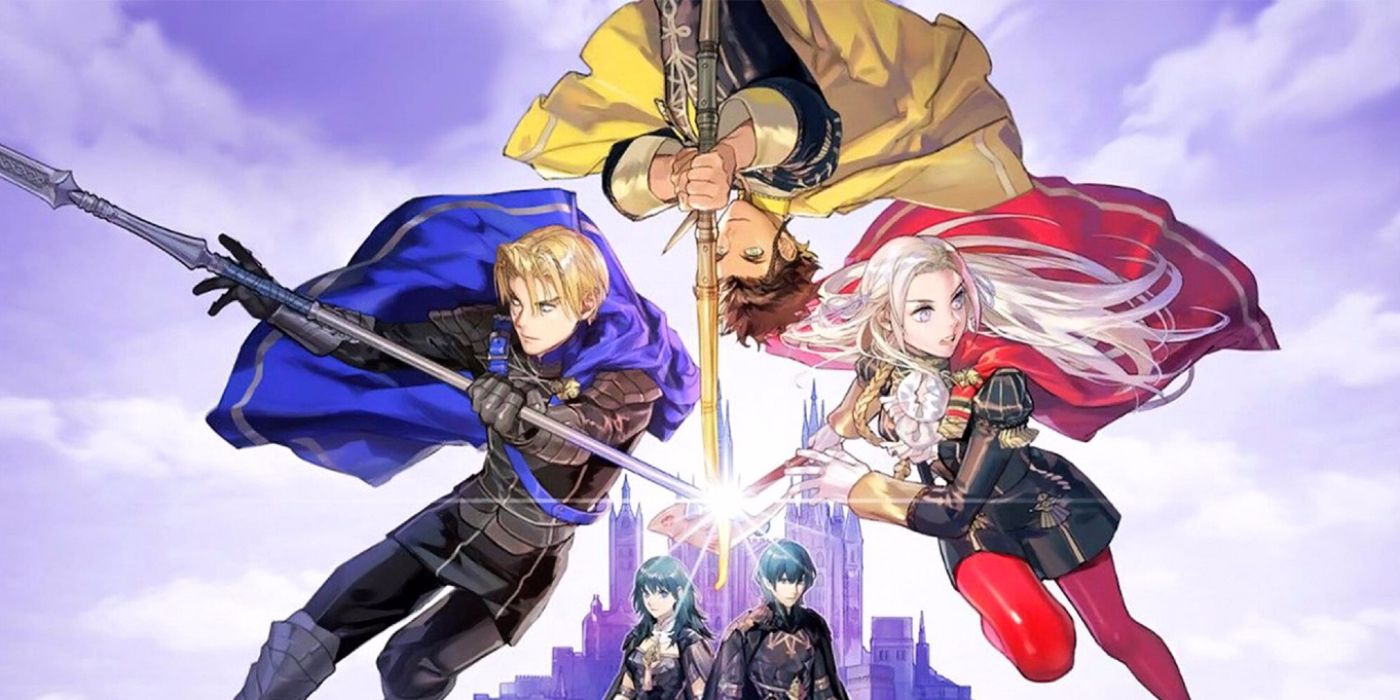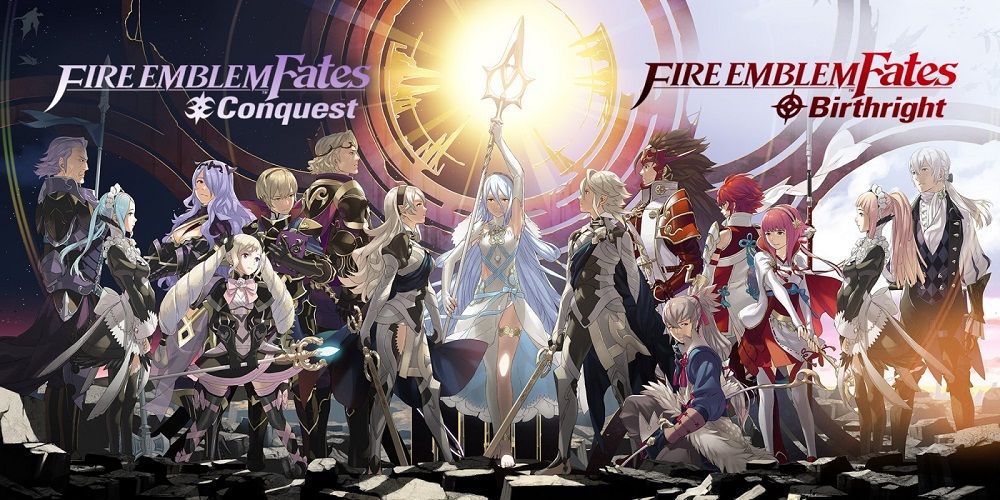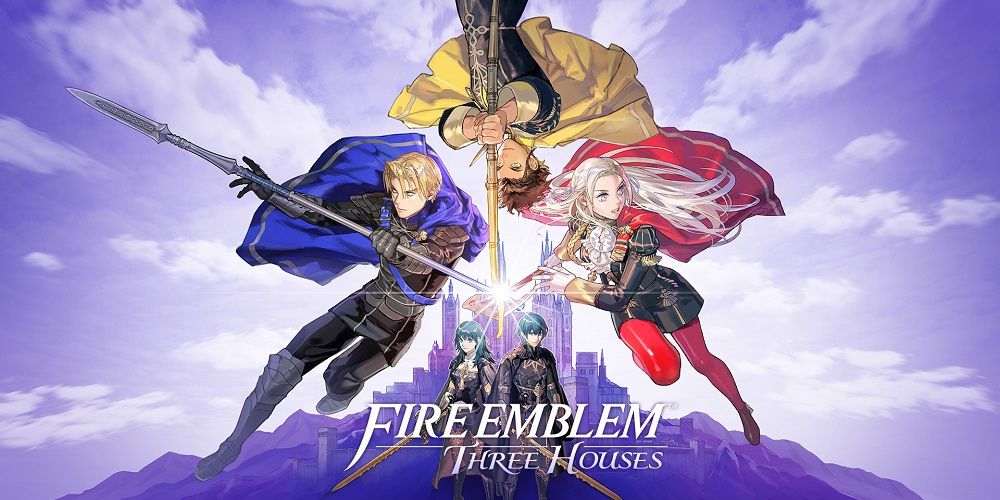While it released for Japanese audiences in June 2015, Fire Emblem Fates received its international release five years ago on February 18, 2016. In many ways the game felt like a victory lap, telling its story across three titles; Birthright, Conquest, and Revelations; in a strategy reminiscent of Pokemon. After weak performances on the GameCube and Wii, 2012's Fire Emblem Awakening saved the franchise from extinction, and Fates was to follow up that success. Intelligent Systems had high ambitions for the game, and while this didn't always pay off it did set up ideas arguably elevated by 2019's Fire Emblem: Three Houses.
Fates primarily tells the story of Corrin, a player-insert protagonist who was originally born in the Japanese-inspired Hoshido to Queen Mikoto, but was stolen by the European-inspired Nohr at a young age; raised under its hardened King Garon. In Birthright version, Corrin sides with their birth siblings to stop the warmongering Garon as he attempts to take over the continent. In Conquest version, they side with their adoptive siblings and act as a commander for Garon's army while investigating the nation's evil.
This dual story offered fans the chance to experience the same conflict from two perspectives, but also mechanical diversity. Birthright was structured to be easier with ample opportunities to grind for experience, whereas Conquest took notes from older Fire Emblem games with tougher level layouts and more restrictive progression. In both respects, Revelations was the middle ground, providing the opportunity to recruit most every character for the "true" narrative revealing a crazed ancient dragon from a hidden third land secretly drove the others into conflict.
Despite Revelations being the version meant to tie everything together, it is arguably where most of the cracks begin to show in Fire Emblem Fates' interesting approach to game design. Most of the flaws emerge in its attempt to tell a cohesive story with an overabundance of characters.
Fire Emblem Fates' Narrative Flaws
Though Fates had a number of specific issues such as a controversial support with Soleil removed from the Western release, its ultimate shortcoming was the promise of its narrative not proving justified. Rather than the choice at its core letting players see the same war from multiple angles, it pans out into three serviceable, yet largely disconnected stories that conflict with one another at times. Revelations acts as a third "choice" for Corrin, so it tries to stand alone while putting forth information that explains what players saw in the other options.
Version differences in titles like Pokemon Sword and Shield often boil down to which monsters are available, and while many wish Game Freak went further, Fates shows that telling radically different stories with the same characters can result in personalities fluctuating. Conquest is notably rocky for this, as keeping King Garon the primary antagonist leads the game to try and justify Corrin's instinct that their siblings will side with good while also forcing them to blindly commit atrocities and decry the idea of "justice" for the sake of the plot.
Primary characters like Nohr's Prince Xander suffer from being too extremely varied for plot purposes, but the game's unwieldy roster also means many aren't stretched far enough. There are eight noble siblings with two retainers each, as well as auxiliary units and child characters based on Fates carrying forward Awakening's relationship system. Because of this size, some characters get the short stick with one-note personalities. For example, Prince Ryoma's retainer Kagero has a huge amount of dialogue revolving solely around her inability to paint non-terrifying art. Fire Emblem is built upon archetypes, but Fates feels lazy with differentiating its cast at times.
Another token example of lazy character work is Scarlet, a tertiary character who joins Corrin in Birthright as a freedom fighter from Nohr (in Conquest she's killed as an enemy boss). Scarlet is minor enough that only male Corrin is a romance option, though Fire Emblem Fates added homosexual romances for select units, but if players choose to marry her in the Revelations path too they only have a short amount of time before she dies in the story.
While Scarlet's death is not necessarily bad, as it gives her more plot relevance, the issue is a seeming oversight in providing the option to marry her in the first place. No dialogue is added to her death scene, and neither Corrin nor their daughter Kana bring it up when she returns as a zombified boss controlled by the mad dragon Anankos. This is in spite of the game letting Hoshido ninja Kaze die in Birthright should the player not have a certain support level; and in Fire Emblem: Awakening there are unique scenes if player-insert Robin marries Lucina. Thus, it is a bizarre exclusion given Intelligent Systems decided to increase Scarlet's role.
How Fire Emblem: Three Houses Improved
All of this is not to say Fates is an utter failure in its storytelling; it has some stand-out characters and an interesting mythology surrounding Anankos and the mythical weapons owned by Hoshido and Nohr's royalty. However, the way Fire Emblem: Three Houses handles its branching narrative feels as though Intelligent Systems took a lot of lessons from its triple-game experiment.
Three Houses also has three primary paths for players to send its protagonist Byleth down, but offers these choices in a more clever way. Regardless of which house Byleth teaches, the first half of the game is largely the same, offering players the opportunity to get attached to every character before the paths diverge. Fates has a prologue before its choice, but it's short and only gives a brief impression of each side.
After the time skip in Three Houses, every path follows the same war in broad strokes despite different sides coming out on top, but what makes every house more unique is they focus on different goals and offer different lore as a result. The Black Eagles route focuses on Fodlan's class system and the atrocities of the Church of Seiros; the Blue Lions route focuses on rebelling against the tyrannical rule of the Adrestian Empire; and the Golden Deer route focuses on the continent's mythology and tackles its evil secret society, Those Who Slither in the Dark.
Because every path in Three Houses uses its war as a set dressing to explore different goals and tell unique stories, it ultimately comes out stronger than Fates, which strained to turn the same war into three different stories entirely. Part of that is undoubtedly due to the more restricted cast of characters in Three Houses, and the less abundant support conversations. While this takes away some player agency in choosing who to pair together, it means every interaction exists to give new insights into its cast members.
Some of Fates' ambitious shortcomings pushed the series forward, but the games also defined an era of success thanks to its characters headlining titles like Fire Emblem Warriors and Fire Emblem Heroes - not to mention Corrin's addition to Super Smash Bros. 4. Mechanical decisions like using Fire Emblem games of the past to create tiers of difficulty built upon well-honed gameplay with options for players to further customize their units. Five years later, Fates undoubtedly stands out, even if some may not look upon it as the strongest showing in the franchise.
Fire Emblem Fates is available now on the Nintendo 3DS.



